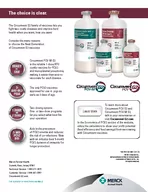PPT-Packed Cell Volume (PCV)
Author : deborah | Published Date : 2022-06-15
Dr Versha Prasad Packed Cell Volume PCV Packed cell volume PCV is the volume occupied by the red cells when a sample of anticoagulated blood is centrifuged It
Presentation Embed Code
Download Presentation
Download Presentation The PPT/PDF document "Packed Cell Volume (PCV)" is the property of its rightful owner. Permission is granted to download and print the materials on this website for personal, non-commercial use only, and to display it on your personal computer provided you do not modify the materials and that you retain all copyright notices contained in the materials. By downloading content from our website, you accept the terms of this agreement.
Packed Cell Volume (PCV): Transcript
Download Rules Of Document
"Packed Cell Volume (PCV)"The content belongs to its owner. You may download and print it for personal use, without modification, and keep all copyright notices. By downloading, you agree to these terms.
Related Documents














